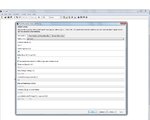nuflia
Newbie level 6

Hi
I'm trying to get a Simulink model for Bidirectional DC-DC converter to be used for battery charge and dis-charge through a dc bus, the control strategy used is a two-controller control; one is for generating the reference current and the other one is for control the voltage, so the battery is controlled to charge when there is sufficient dc bus voltage and discharge to keep the dc-bus constant
It would be great help if someone gave help
I'm trying to get a Simulink model for Bidirectional DC-DC converter to be used for battery charge and dis-charge through a dc bus, the control strategy used is a two-controller control; one is for generating the reference current and the other one is for control the voltage, so the battery is controlled to charge when there is sufficient dc bus voltage and discharge to keep the dc-bus constant
It would be great help if someone gave help



